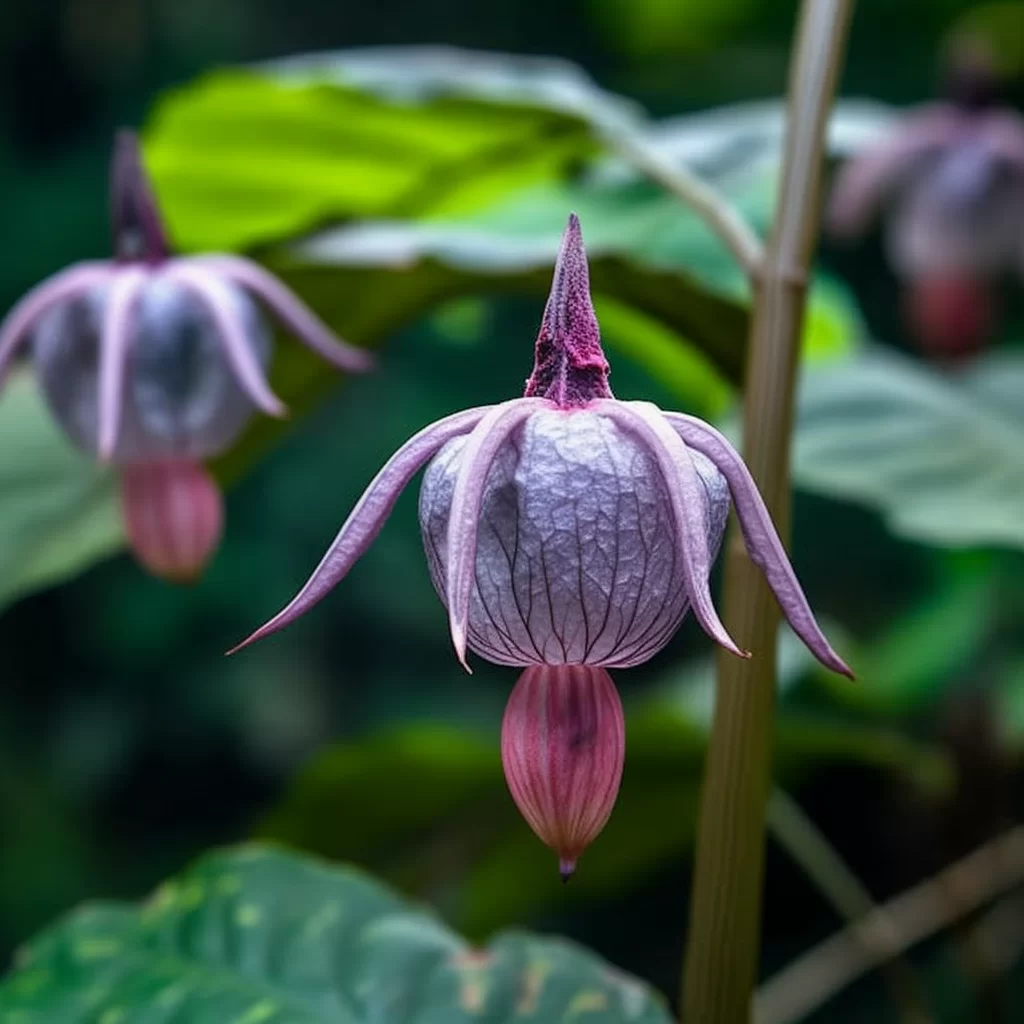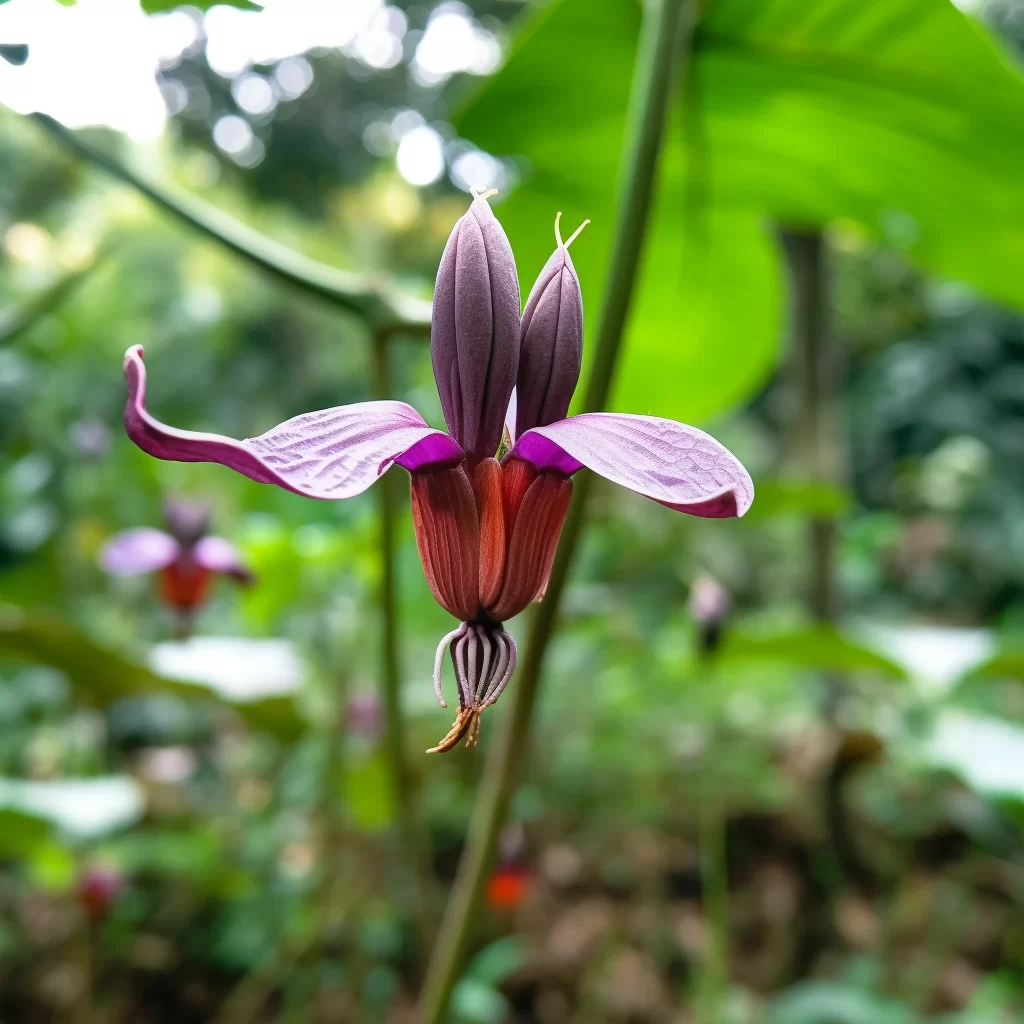Story of Day :
Contents
The Bat Flower Plant: A Complete Guide and Care Tips
If you’re on the hunt for a plant that’s sure to add some personality and intrigue to your garden, you might want to consider the bat flower plant.
Also known by its scientific name, Tacca chantrieri, this unique plant boasts dark purple flowers that resemble bat wings.
It’s not only a visually striking addition to any outdoor space but is also bound to catch people’s attention and get them talking.
Luckily, caring for this exotic specimen isn’t too difficult, and in this article, we’ll be providing you with all the tips and tricks needed to keep your bat flower thriving.With its distinctive blooms and easy-to-follow care instructions, adding a bat flower plant to your garden is an excellent way of creating a dynamic focal point that will draw everyone’s attention.
Whether you’re an experienced gardener or just starting out on your green thumb journey, growing the Tacca chantrieri can be incredibly rewarding – from watching it grow over time to seeing its magnificent flowers bloom in all their glory.
So why not give it a go? By following our guide on how best to care for this fascinating species of plant, you’ll be well on your way towards cultivating something truly special.
Overview of the Bat Flower Plant
The bat flower plant is a stunning plant that is native to Southeast Asia.
It can grow up to three feet tall with leaves that can stretch up to two feet wide.
What sets this plant apart from the others are its unique flowers, which are usually black or dark purple in color, although some varieties come with white or greenish-yellow blooms.
The flowers’ petals hang down like wings, creating an eerie and intriguing appearance that gives the plant its name. If you’re looking for a conversation starter for your garden or home decor, the bat flower plant is definitely it! Its magnificent size and eye-catching floral display make it an excellent addition to any garden space or indoor setting.
If you’re looking for a conversation starter for your garden or home decor, the bat flower plant is definitely it! Its magnificent size and eye-catching floral display make it an excellent addition to any garden space or indoor setting.
Whether you choose a dark purple variety for a moody atmosphere or go for something lighter and brighter, this fascinating species will not disappoint!
The bat flower plant is an extraordinary sight to behold, not just for its striking appearance but also for its cultural significance in certain regions of Asia.
This unique plant is renowned for its medicinal properties and has been used in traditional ceremonies for centuries.
The bat flower’s intricate details and deep shades of purple make it a popular choice among gardeners who seek to add a touch of exotic beauty to their gardens.In addition to its aesthetic appeal, the bat flower plant has played an important role in traditional medicine practices across Asia.
Its leaves, roots, and flowers are believed to possess various healing properties that can help treat a range of ailments such as fever, coughs, and skin infections.
Its cultural significance extends beyond medical purposes as well; the bat flower is often used in religious ceremonies where it symbolizes strength and resilience against adversity.
Overall, the bat flower plant is more than just a pretty face – it holds immense cultural value that continues to be cherished by communities across Asia today.
Caring for Your Bat Flower Plant

Light Requirements
- The bat flower plant requires bright but indirect light.
Direct sun can scorch the leaves and flowers so keep them away from windows that receive full sunlight.
- If growing indoors, place the pot near a north-facing window or use artificial lighting if natural light is unavailable.
Watering Needs
- Bat flower plants prefer moist soil but don’t water them too frequently as they’re susceptible to root rot.
Allow the top inch of soil to dry out before watering again.
- Avoid getting water on the foliage as this can cause fungal diseases such as powdery mildew.
- Mist regularly during dry spells but avoid misting when humidity levels are high.
Soil Requirements
- The bat flower plant prefers well-draining soil with a pH range of 5.5 to 6.5.
- You can use a mixture of peat moss, perlite, and vermiculite to create an ideal growing medium for your bat flower plant.
- Make sure to add organic matter such as compost or leaf litter to the soil to improve its fertility and texture.
Fertilizer Needs
- Feed your bat flower plant once a month during the growing season (spring and summer) with a balanced fertilizer that’s high in nitrogen but low in phosphorus and potassium.
- Avoid fertilizing during the fall and winter as this is their dormant period.

Pests and Diseases
If you are a plant enthusiast, you would know that bat flower plants are sturdy and tough to break.
However, this does not imply that they cannot fall victim to pests or diseases.
In fact, there are some typical issues with these plants that you may come across on your journey as a cultivator.
These issues could range from small-scale infections like fungal growths or viral diseases to severe infestations of insects such as spider mites.
As a result, it is crucial for any gardener or horticulturist to stay vigilant and keep an eye out for signs of trouble in their bat flower plants.Despite the hardiness of bat flower plants, there remain several challenges in maintaining their health and wellbeing.
One common issue is the presence of pests like mealybugs or whiteflies which can suck the sap from leaves and cause them to wilt over time.
Additionally, fungal infections such as powdery mildew can also take hold if conditions become too humid or damp around the plant’s base.
Knowing how to identify and treat these problems quickly will prevent any long-term damage from occurring to your beloved bat flowers while ensuring they remain healthy and vibrant throughout their lives!
- Aphids: These small green insects feed on sap which can cause wilting, yellowing, or distorted leaves.
Use insecticidal soap or neem oil spray to control them.
- Mites: These tiny arachnids also feed on sap which can cause leaf discoloration, webbing, or defoliation.
Spray the foliage with water regularly to discourage mites from settling in your plant.
You can also use insecticidal soap or neem oil spray if they persist.
- Powdery mildew:This fungal disease appears as a white powdery coating on leaves which can lead them becoming yellowed .
Remove infected leaves immediately and treat with fungicide according manufacturer’s instructions.

Propagation
If you’re looking to grow a bat flower plant, there are two ways you can propagate it: through seed or division.
Propagation by seed involves collecting the seeds from the plant’s pods and sowing them in a well-draining soil mixture.
Keep the soil moist and warm, and in a few weeks, your seeds should sprout into small plants.
Alternatively, propagation by division involves separating the parent plant into smaller sections with roots attached.
Simply cut away a portion of the mature plant’s root system, making sure each section has enough leaves to sustain itself.
Plant these sections in separate pots filled with well-draining soil mixtures and water them regularly until they establish themselves.Overall, propagating bat flower plants isn’t too difficult as long as you follow some basic steps.
By choosing between seed or division propagation methods depending on preference or availability of resources (such as seeds), you can successfully grow these unique flowers at home with ease!
- Seed propagation: Collect the seeds from mature flowers and plant them in a pot filled with moist soil.
Cover the pot with plastic wrap and keep it in a warm, well-lit area.
The seeds should germinate within 4-6 weeks.
- Division: Divide your plant during the spring or summer when it’s actively growing.
Using a sharp knife, cut through the rhizomes (underground stems) and replant them in separate pots.
In Conclusion
Looking for a unique and easy-to-care-for plant to add to your indoor or outdoor garden? Consider the bat flower plant! This exotic beauty is sure to catch your eye with its striking black blooms that resemble bat wings.
But don’t let its dramatic appearance fool you – the bat flower plant is surprisingly low-maintenance.
With just a few care tips, you can keep this stunning plant thriving for years to come.To care for your bat flower, make sure it gets bright but indirect light and moderate watering.
The soil should be well-draining and slightly acidic, so consider adding some peat moss or sand as needed.
You may also want to fertilize occasionally with a balanced fertilizer.
Overall, the bat flower plant is an excellent choice for anyone who wants a striking yet easy-to-care-for addition to their garden or indoor space.